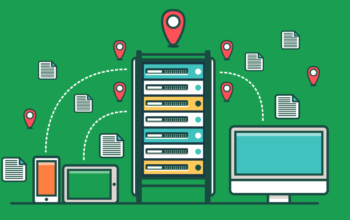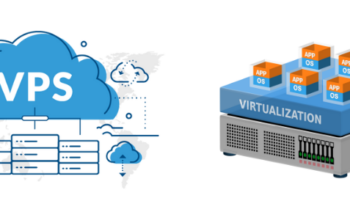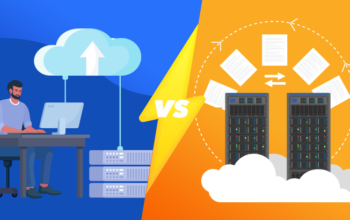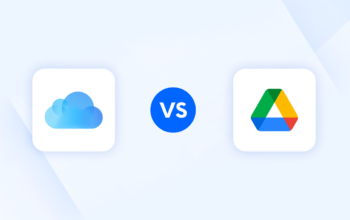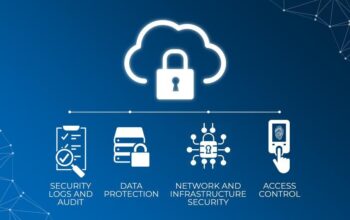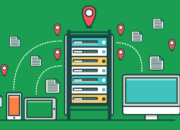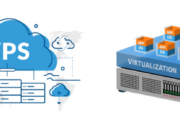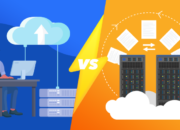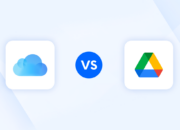Uzone.id – The digital period is based on cloud computing which enables organizations and individuals to store their data and applications over the internet. It gives flexibility and scalability that had never been seen before in Europe or North America.
However, as it becomes part of everyday life, security threats have become more prevalent than ever before. A single data breach or privacy violation can cause serious problems for any user so we should address them all comprehensively.
Security problems with cloud systems
Clouds are threatened by many things such as hacking and ransomware. In the previous year alone 70% of businesses experienced a breach into their cloud storage according to CSA (Cloud Security Alliance). Another risk comes from insiders who might access unauthorized areas or even former employees like what happened at Capital One when someone used misconfigurations within its system through an ex-worker’s account thereby stealing sensitive files.
Regulations also pose great difficulties due to the complexity involved while trying to navigate through them all. For example, in the US there is HIPAA which mandates stricter controls over health records but on the other hand EU has GDPR that requires companies to protect personal information better than they are doing now. This means multinational enterprises must comply with different laws depending on where they operate thus becoming burdensome for some firms.
Why Identity and Access Management (IAM) is important?
IAM is important because it helps protect data stored within the cloud service provider’s infrastructure. When multiple users interact with various devices processing information stored in clouds, managing identities gets harder as well mismanagement can lead to unauthorized entry points hence causing breach events.
One way of ensuring that your files remain secure both while in transit and at rest involves encryption algorithm technology which converts plaintext into ciphertext form. Major encryption technologies are provided by vendors such as Amazon Web Services (AWS) among others offer advanced protection methods where necessary so go ahead and choose one!
Firewalls act as the limit between two networks, allowing only authorized traffic through. It can be either software or hardware-based and allows administrators to control incoming/outgoing communication based on certain security rules like source IP address, destination port number etc.
IDS (Intrusion Detection System) monitors network traffic looking for signs of unauthorized access attempts by analyzing packet headers against pre-configured signatures representing known threats; when the match occurs an alert is raised notifying admins about this issue thus helping them respond accordingly i.e., block attacker’s IP address temporarily until further investigation completes successfully.
Zero Trust model ensures that all requests must be authenticated regardless of user location before being granted access rights. Google has implemented the BeyondCorp initiative which employs the Zero Trust model so as to enforce strict authentication procedures across its entire infrastructure thereby enhancing security levels within its cloud environment significantly.
Artificial Intelligence (AI) and Machine Learning (ML) technologies are being used in developing next-gen cloud solutions designed for proactive detection rather than reactive response towards potential threats. IBM QRadar among others utilizes AI capabilities for analyzing large volumes of data within the shortest time possible hence enabling the identification of various types of security risks much earlier before they become major problems.
Standards and Compliance
Organizations need to comply with certain regulations like CCPA, HIPAA, or GDPR that set a higher bar when it comes to protecting personal information from being accessed without consent by unauthorized parties. Failure to do so may result in heavy fines imposed upon the company involved coupled with the loss of trust customers have put them over the years due to negligence shown towards safeguarding individual privacy rights well non-compliance becoming public knowledge
Guide how enterprises can ensure data security in the cloud
There are several ways that companies can improve their cloud security systems. These include using multi-factor authentication, keeping software up to date, and conducting regular security audits among others. Multi-factor authentication may prevent 99.9% of automated cyber-attacks, according to a report by Cybersecurity Ventures.
The most crucial thing is selecting a secure provider for cloud services. When evaluating providers, one should ask about compliance certifications as well as customer support and other security measures taken by them. The potential client needs also to enquire from different vendors how they encrypt data, respond to incidents related to breaches of security history etcetera.“It is important not just look at price but also consider what kind of safety net this organization has,” said Jane Smith who works as cybersecurity consultant at SecureTech.
The challenges regarding privacy and protection within cloud computing are many although they are not impossible to overcome them. The first step is recognizing threats; understanding regulatory complexity; realizing IAM issues etcetera. Another way to do this would be through strong encryption methods; firewalls that cannot allow any unauthorized access into your network system; zero trust models which can only grant access based on the user’s activity level among others like artificial intelligence-based solutions will dramatically improve our safety while using these types of services.
“There is a concern among organizations about their ability to protect sensitive data stored offsite in third-party environments. If we can shed some light on the problem then I think we could come up with a solution or strategies that bridge the perceived effectiveness gap between providers’ controls over information systems residing outside corporate boundaries and an organization’s faith or confidence lacking in its own capability safeguarding such information when stored elsewhere,” remarked one Hillary Baron Senior Technical Director for Research at Cloud Security Alliance (CSA).
In today’s world where everything revolves around computers connected via networks known as internet clouds, there should be no compromise even an inch towards ensuring the tightest security possible. This can only be achieved if businesses keep themselves updated at all times and invest heavily in cutting-edge security measures that will guarantee the safety of the information stored within these systems.
With the right cloud service providers and adherence to best practices, organizations can overcome the security complexity associated with cloud computing, therefore building a resilient digital infrastructure that protects sensitive data against dynamic threats as it evolves over time.




